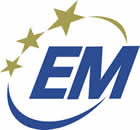Jean Engle
|
 |
Mark McFarland
|
For severe weather information, tune to KTMX 104.9 FM or KUTT 99.5 FM.
Vision
Emergency management works to create a framework that will assist communities in reducing vulnerabilities to hazards and to help those communities cope with disasters.
Mission
The National Preparedness Goal identified mission areas within which communities must build and sustain capabilities. Using a Whole Community approach, Emergency Management supports or executes the below mission areas both locally and regionally:
- Prevention:The capabilities necessary to avoid, present or stop a threatened or actual act of terrorism. As defined by Presidential Policy Directive 8 (PPD-8), the term "prevention" refers to preventing imminent threats.
- Protection:The capabilities necessary to secure the homeland against acts of terrorism and human-caused or natural disasters.
- Mitigation:The capabilities necessary to reduce loss of life and property by lessening the impact of disasters.
- Response:The capabilities necessary to save lives, protect property and the environment and meet basic human needs after an incident has occurred.
- Recovery:The capabilities necessary to assist communities affected by an incident to recover effectively.
Emergency Management Core Functions Performed during an Emergency:
|
Direction, control, and coordination; Public protection; Mass care and emergency assistance; Information collection, analysis, and dissemination; |
Emergency public information; Resource Management; Health and medical services; |
Emergency Management Program Functions Performed on a Daily Basis:
| Laws and authorities | Hazard mitigation (Homestead LEPC) |
| Threat and hazard analysis | Logistics and facilities |
| Planning (Local Emergency Op Plan) | Training (Storm spotters) |
| Operations and procedures (COOP) | Resource management (COG) |
| Communication and warning (Severe WX) | Public education and information |
| Direction and control | Finance and administration |
| Exercises, evaluations, corrective actions |

